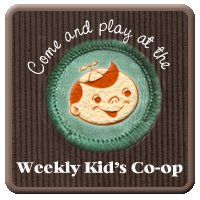As any mother of three or more knows, the most knowledgeable moms are those with only two children. Thus, having pretty well wrapped up potty training with my second, I'd like to share some thoughts on the subject before a third comes along and wrecks my theories!
Please note, these are not scientifically backed assertions, just the observations of a mom who keeps her ears open.
When should you start potty training?
My observation is that the answer to this question is largely cultural. American pediatricians recommend waiting until the child indicates that he's ready. You can take a look at the
official list of readiness indicators from the American Association of Pediatrics. Some moms say you shouldn't bother at all. The child will eventually train himself, albeit maybe not until age five! Here's a link to
an article by a mom who gave up potty training. In contrast, my friend in China received some strong negative feed back from the locals because her daughter was inexcusably old to still be in diapers. Her daughter was eight months old! If you are thinking of taking the early route, you may also want to read
this western doctor's opinions, and be sure you're doing it "the way the locals do."
In my opinion the real answer to the question of when is: whenever the primary caregiver says so. If your child in is in daycare, it's likely that the caregiver has potty trained many children, and you would do well to ask and follow her advice. Not only will you benefit from her years of wisdom, but your child will have a consistent set of expectations during the day and in the evening.
Things for the primary caregiver to consider
Potty training is a physical and emotional process.
Muscle tone is an important factor. A child who is naturally strong will be able to control his body functions faster than one who is more slender. In addition, some children have special issues that make potty training more difficult.
Toilet use is connected to independence, and the child may react to toilet training depending on
how the child feels about independence. The caregiver may also react based on her feelings about independence, or the act of cleaning up after another. I find it somewhat degrading to have to clean up after someone who could have done it for themselves. It's a personal hang up, but it did effect our toilet training experience.
The younger you start, the longer it will take.
One of my friends did potty train her son, beginning within a week or so of birth. It took nearly a year before he was consistently using the toilet. My friend's mom potty trained her child in less than three days, but she waited until after her third birthday.
The younger you start, the sooner you'll be done.
If you glance at the above stories you'll see that starting earlier did result in the child being out of diapers sooner.
The younger you start, the shorter the bathroom intervals you need.
In general, younger children have weaker muscles than older children, so they will need to go more often. My observation of my children, and friends children is that every twenty minutes is the norm until between eighteen months and passed two-years-old. This may be why many American moms seem to feel this is the age for potty training. Running for a toilet every twenty minutes all the time can be quite a chore!
Going on command is different than going as needed.
Although you can apparently train a child to go on command very early, I haven't observed many children who go as needed before three and a half. If you potty train the child early, you'll also have to train all adults involved in care to think of his or her toilet needs.
Major changes like new siblings and moves will slow down the process.
Most articles and books will actually tell you not to start potty training until you have a period of six months or so free of these kinds of changes. This is a problem for families like mine. By the time we are free of these changes for that long, my oldest might be ten years old! You can potty train through new babies and through moves. My son had to deal with a new sister and a move. My daughter has had to deal with a move across the world, and weeks of other travel. The changes make it harder, but it can be done.
Going against your community is difficult.
Cultures that advocate early toilet training tend to be more comfortable with children peeing out doors. Cultures that advocate waiting until the child is ready tend to only accept children peeing in a proper toilet. If you decide to train your child early, your back up caregivers may not be comfortable following through on your chosen methods.
On the other hand, if you train later, you may find that people refuse to care for your child at all, as they are not willing to change diapers for older children. My friend in China ran into this issue with caregivers for her daughter before one-year-old. In the United States, programs for pre-schoolers around age three may require toilet training.
Let me state again, that the decision of when to potty train resides with the primary caregiver.
There is not a universal right answer for this issue. I hope that the above thoughts help you make a healthy decision for you and your child.















.jpg)










